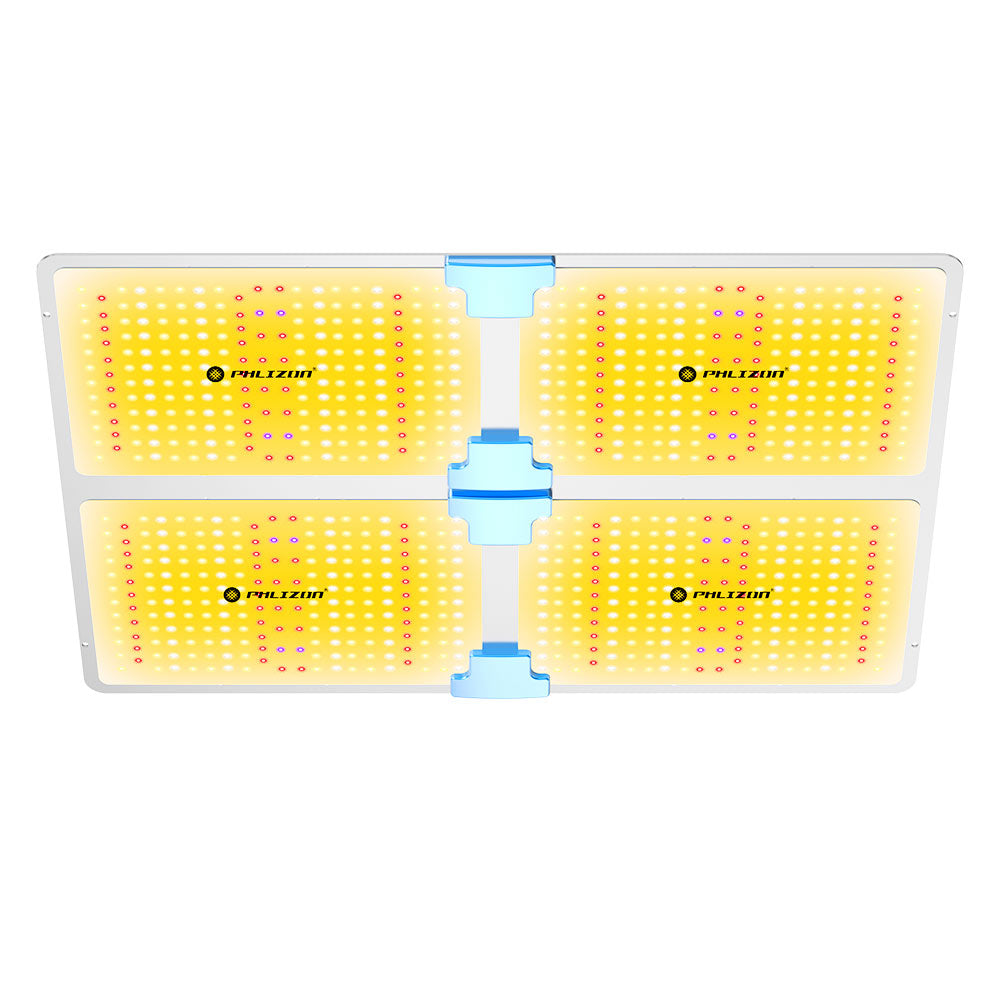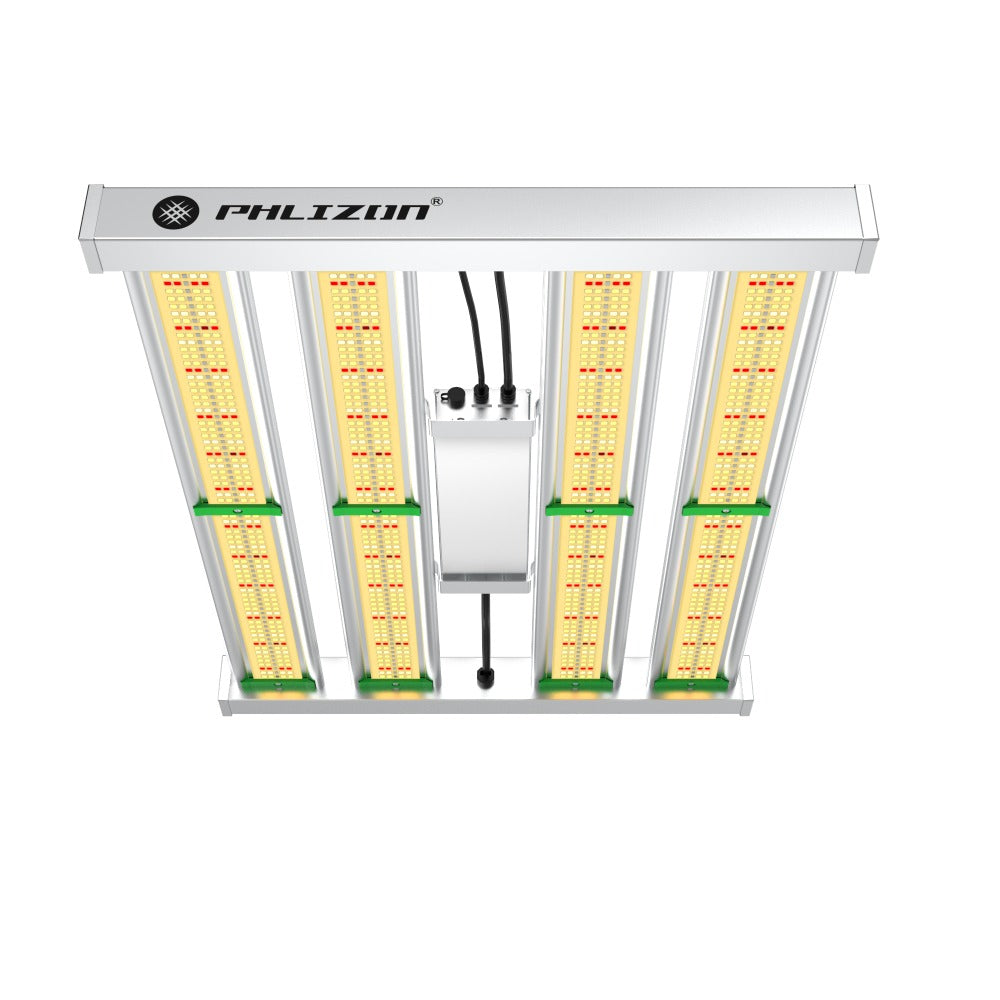Menu
Are All LED Grow Lights the Same?
When I first started indoor gardening, I thought an LED grow light was just an LED grow light. Boy, was I wrong. After killing more than a few innocent plants and wasting money on the wrong equipment, I learned that the world of LED grow lights is surprisingly complex. Let me save you from making my mistakes.
What Makes LED Grow Lights Special?
At their core, LED grow lights provide artificial light that supports photosynthesis—the process where plants convert light into energy they need to grow. Unlike the regular LEDs in your home, grow lights are specifically designed to emit wavelengths that plants actually use.
Sure, you'll pay more upfront for quality LED grow lights, but they typically last twice as long as other lighting systems. Plus, their lower energy consumption means your electric bill won't give you a heart attack every month. For me, that's been a serious win-win.
The Spectrum Matters—A Lot
Here's where things get interesting. Plants evolved under sunlight, which contains the full color spectrum. Different wavelengths trigger different responses in plants:
- Blue light encourages leafy growth and stockiness
- Red light promotes flowering and stretching
- Green light penetrates deeper into the canopy, reaching lower leaves
- UV light stimulates the production of beneficial compounds
Many cheaper LEDs claim to be "full spectrum" but actually use just a handful of colors or white LEDs that look great to our eyes but aren't ideal for plants. I learned this the hard way when my first crop of basil grew tall, spindly, and pathetic because my budget light had too much far-red light compared to true red.
Research shows that moderate UVA exposure can boost plant dry weight by 5-15%. Those fancy LED panels with UV strips? There's actually science behind that feature.
Intensity: Brightness Isn't Just About Wattage
One of the biggest misconceptions I had was equating wattage with brightness. Wrong again! What really matters is PPFD (Photosynthetic Photon Flux Density), which measures how much usable light actually reaches your plants.
Standard household LEDs might deliver 25-600 μMol/m²/s depending on distance, while proper grow lights can hit 1400 μMol/m²/s. That's a massive difference your plants will definitely notice.
The true measure of efficiency is efficacy—how well a light converts power into plant-usable light. Two lights with identical wattage can perform completely differently. For example, a 720W LED with quality diodes can outperform a 1000W HPS light while using less electricity.
Design Differences That Actually Matter
During my grow light journey, I've tried both bar-style and board-style LED fixtures. Each has its pros and cons:
Bar-Style LEDs
- Better heat distribution due to their spread-out design
- More even light coverage across your growing area
- Generally more expensive
- Multi-bar designs offer flexible arrangement options
Board-Style LEDs
- Usually more affordable
- Quantum boards have become popular recently
- Typically generate more heat in a concentrated area
- Simpler installation in most growing spaces
Both styles can provide various light spectra options, from broad to targeted wavelengths. In my experience, bar-style lights have been worth the extra cost for heat management alone, but board-style lights work perfectly fine for smaller setups.
Heat Management: More Important Than You Think
One benefit of LEDs that I've really come to appreciate is their heat efficiency. My grow tent used to feel like a sauna with my old HPS lights. Switching to LEDs meant I could finally touch my light fixtures without burning my fingers off.
Some technical details that matter:
- Actively-cooled LEDs (with fans) typically outperform passively-cooled ones
- Primary lenses increase efficiency by capturing more light from the diode
- Glass protective lenses can steal up to 10% of light output
- Those secondary lenses that create impressive PPFD hotspots? They often focus light too narrowly for even growth
How LED Grow Lights Compare to Other Options
Before settling on LEDs, I experimented with fluorescent lights. They worked okay for seedlings and leafy greens, but they couldn't match LEDs for flowering plants.
LED vs. Fluorescent
- LEDs use less energy and produce less heat
- LEDs last significantly longer
- Fluorescents are cheaper initially but cost more over time
- LEDs provide better spectrum options for all growth stages
LED vs. HID (including HPS)
- Quality LEDs use about half the energy of HIDs for the same light output
- LEDs last 2-3 times longer
- LEDs don't need separate ballasts or reflector hoods
- LEDs run cooler, reducing ventilation needs
- Top LEDs offer variable spectrum control that HIDs can't match
Making a Smart Choice for Your Indoor Garden
After several years and more money than I care to admit, here's what I've learned about choosing LED grow lights:
Don't get hypnotized by a single impressive measurement. Companies love to brag about one stellar PPFD reading or amazing μmol/J efficiency number, but these can be manipulated. The true test? How well plants actually grow under the light.
Consider your space, plants, and goals. A small herb garden has different requirements than a flowering cannabis operation or microgreens production. Matching your light to your specific needs will save you money and frustration.
Common Questions I Wish I'd Known Earlier
Can regular LED bulbs work for plants?
In a pinch, yes, but don't expect miracles. Regular LEDs lack the specific wavelengths that optimize plant growth. Your plants might survive, but they won't thrive like they would under proper grow lights.
What's better: full-spectrum or targeted-spectrum lights?
It depends on your goals. Full-spectrum lights are more versatile (like having an all-purpose tool), while targeted lights excel at specific growth stages. For beginners or mixed gardens, I recommend full-spectrum.
How do I spot a quality LED grow light?
Look beyond the marketing hype. Check for balanced PPFD across the coverage area, efficient diodes, good heat management, and dimmable controls. A reputable manufacturer with actual grow test results speaks volumes.
Should I just buy the most expensive light I can afford?
Not necessarily. I've seen $100 lights outperform $300 ones in side-by-side tests. Consider your specific needs and compare actual specifications rather than price tags.
How close should my lights be to my plants?
This varies based on light intensity and plant type. Generally, start with LED lights about 12-24 inches above seedlings and 6-18 inches above mature plants. Watch for signs of light stress (yellowing or curling leaves) and adjust accordingly.
The Bottom Line
Not all LED grow lights are created equal—and thank goodness I finally figured that out. Understanding the differences in spectrum, intensity, design, and efficiency has completely transformed my indoor gardening success.
Whether you're growing a few herbs on your kitchen counter or filling a basement with vegetables, choosing the right LED grow light for your specific situation makes all the difference. Your plants will reward you with faster growth, better yields, and healthier appearance—and your wallet will thank you for the energy savings in the long run.
Featured blog
- Choosing a selection results in a full page refresh.


















